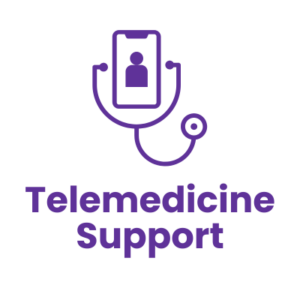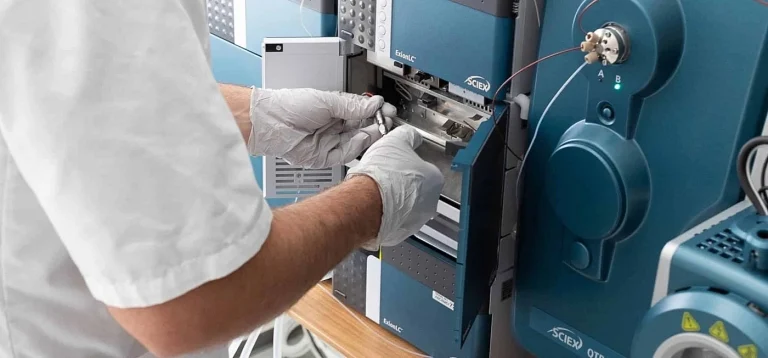The Client
A major urban hospital network in the Midwest, serving as a Level I Trauma Center and healthcare safety net for a metropolitan region of more than 2 million people, uses Salesforce to manage interactions with over 500,000 patients each year.
The network features two teaching hospitals with 4,000 employees and 625 medical staff. Between all of its facilities, it averages more than 3,000 births and 80,000 emergency department visits annually. Its online patient portals hold 30,000+ individual accounts, and the network is particularly committed to harnessing the latest technology to engage and care for vulnerable patient groups throughout the region.
The Challenge
SightCall met the client at a crossroads in its journey of innovation to care for patients using digital tools. Administrators had wanted to launch telehealth and virtual physician visits for several years but felt unsuccessful in realizing an effective and fully-integrated system all parties were on board with using.
The company had established a care advice line with call centers staffed by nurse practitioners trained to screen illnesses and problems over the phone and recommend solutions. But because they did not have a dedicated body of workers to staff the call centers, departmental nurses often had to be pulled off floor shifts to fill in the gaps.
The client also tried several different platforms to manage its care line, along with the limited number of telemedicine calls they facilitated monthly. With each, it encountered complicated training and licensing systems and little to no integration with Salesforce and online patient accounts.
“They took forever to get up and running, if at all,” said a senior IT director, when asked about the ability to quickly scale-up previous systems in an emergency situation.
Some medical staff were also resistant to take bigger steps toward virtual visits.
“Our doctors were somewhat leery and uncertain about telehealth,” recalled the network’s senior director of primary care. “They felt it was a great concept, but they were skeptical about it working in practice. Nothing had come along yet that convinced them it was a tool to transform patient care.”
These factors worked against a larger rollout of remote solutions. The client’s patient advice line fielded a few hundred calls a week, while telehealth calls hovered around 80 a month. Meanwhile, its long-term vision of strategically employing digital data to reach vulnerable patients and address health disparities in the region was restricted by the limited tracking systems of the platforms it used.
The Solution
When the client chose SightCall, it was drawn to the platform’s seamless integration with its existing Salesforce Health Cloud system. IT specialists valued the ability to go live with nearly unlimited numbers of users in minimal time, as well as upscale call capacity at short notice.
Physicians and nurses appreciated the platform was device agnostic with high-definition picture quality and low-bandwidth requirements. With augmented reality capabilities, they could guide patients through solutions to problems in real-time, using tools like annotation, screen sharing and remote activation of the patient’s smartphone light.
A live telehealth visit could take place at the same time the Salesforce patient portal was being navigated, without any interruption or screen changing. This meant the written patient assessment could be completed or in-person visits could be scheduled simultaneously with the virtual appointment. Alternatively, data could be extracted from the call and fed back to the Salesforce platform, with no manual entry required, using SightCall’s Smart Optical Character Recognition tool.
These benefits were rounded out by SightCall’s full compatibility with GDPR, CCPA and HIPAA regulations, offering peace of mind for providers and patients, while satisfying the network’s legal and compliance officers.
The Results
The client’s adoption of SightCall took hold just in time for the onset of the COVID-19 pandemic in early spring. And an IT executive said expectations were greatly exceeded.
“We’d tried several different telemedicine platforms, and none worked as well as SightCall did,” she said. “It put everything into one easy, intuitive and flexible package. With the pandemic, our doctors didn’t have much choice to come on board, but even the hardest skeptics have been completely sold on it.”
When the pandemic hit the Midwest, the network established a dynamic command center in a single day. An average of 80 telehealth calls a month exploded to 18,000 calls in April 2020 alone. Though these numbers eventually peaked down with growing numbers of patients returning for in-person clinic visits, by fall 2020, the network still averaged about 8,000 calls each month. SightCall set up a virtual waiting room to handle the increased volume of patients waiting for a provider if they were running slightly behind or needing to review records or test results.
With SightCall, the client has also been able to track virtual calls and compile patient data like never before.
“The dashboard has given us tremendous insight and analytics into the new patients that came in,” added the IT executive. “We can now see who has come through our virtual doors, why they are calling and focus on that data for future outreach, so we can get those patients back in for primary and preventative care.”
The network is currently using the same data to target patient groups for the annual flu vaccine and will do the same for a much-awaited COVID-19 vaccine when one emerges.
“When I first started going around and delivering cameras and microphones to everyone, I wasn’t sure how the doctors would react,” she said. “Looking back on it now, we couldn’t have imagined how transformative SightCall would be. We’re excited to see what the future holds with this partnership moving forward.”



